Winter cycling sunglasses: why do cyclists wear sunglasses in winter?
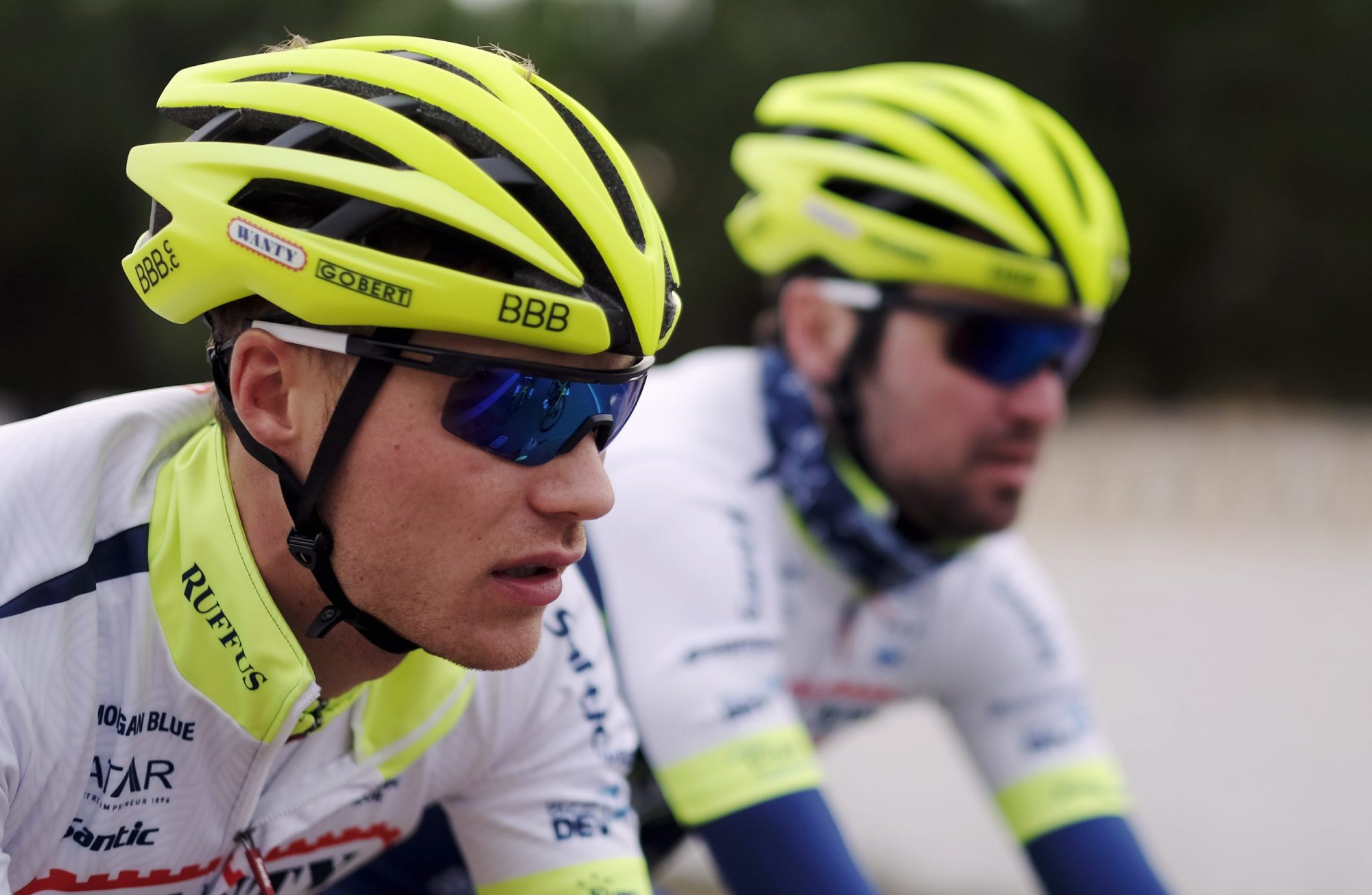

With Peter Sagan sporting his latest 100% signature sunnies in a white-and-gold colour way and Alexander Kristoff rocking a pair of real gold-plated, diamond-encrusted Scicons on the podium, cycling sunglasses are getting bigger, flashier and more expensive every season and they’re showing no signs of shrinking back to the minimal strips of plastic they were 15 or 20 years ago.
However, the best cycling glasses and sunglasses are not all about fashion – they are an essential item for most riders throughout the year. In the summer, they do their traditional job of protecting your eyes from the sun, as well as keeping road debris, wind and bugs out. So, regardless of fashion, bigger is better in many ways.
In winter you might think there’s not so much need to wear them, but in fact the opposite is true. According to the American Academy of Opthalmology, studies have demonstrated that regardless of season, UV exposure may increase your risk of developing cataracts and growths on the eye, including cancer. Even on a cloudy day, UV exposure can be high – and wraparound sunglasses with UV protection will help minimise this.
Not only do your eyes also need protection from UV in winter as well as summer, the risk from harmful objects increases. In the colder months, the roads acquire their usual abrasive coating, a mix of grit and small stones from broken tarmac, thorns and splinters washed off the verge and the fields and the occasional piece of glass. If these nasties don’t manage to puncture your tyres, they can be easily be flicked up into your face, especially on a group ride, even if the rider in front has mudguards fitted.
>>> Winter cycling clothing: everything you need to stay warm
Here’s what to look out for when you’re choosing a pair of cycling sunglasses for riding in winter as well as summer.
Winter cycling sunglasses: lenses for low light conditions
Many brands offer a range of lens options including photochromic, which darkens on exposure to light in order to limit UV transmission, returning to their original state when light is absent. This type is great for the unpredictable light conditions it’s possible to experience on an average Sunday in the UK in winter.
Other brands go with a fixed lens designed for low light conditions, which might allow over 80 per cent of light through with a tint that enhances contrast and improves your ability to pick out potholes.
Most cycling glasses have interchangeable lenses and frequently more than one lens is included in the box with a new pair of shades so that you can swap them out according to the season or light conditions.
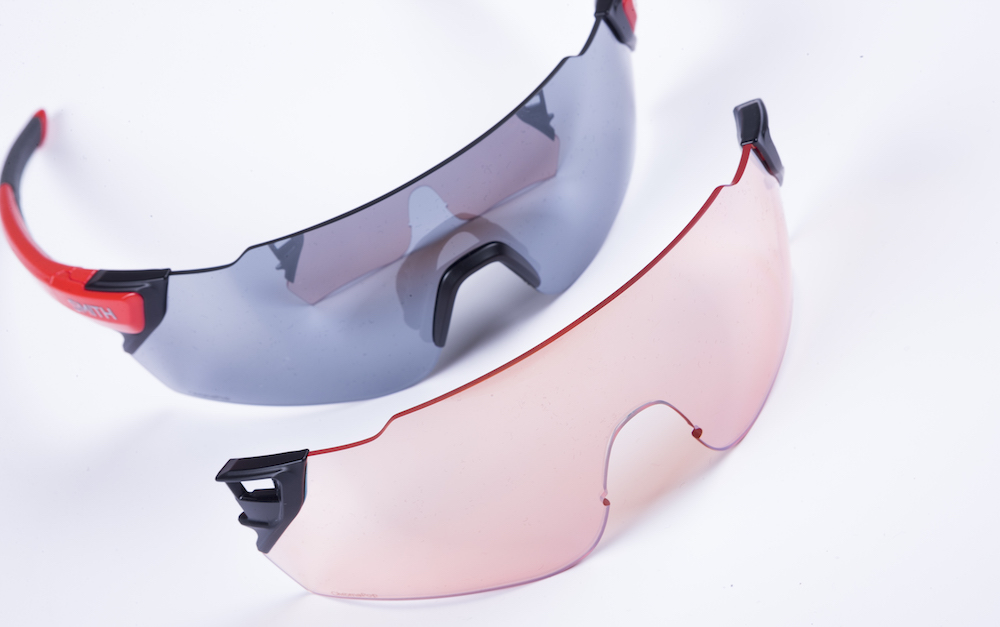
So just as you wouldn’t leave for a winter ride without gloves or overshoes, sunnies ought to be an essential part of your off-season riding kit.
UV protection
Not all lenses offer UV protection, especially very low-budget ones. Make sure you have a good look at the specification – most glasses or lenses are labelled to show how much UV protection they supply, and ideally it will be 100 per cent against UVA and UVB.
The amount of UV protection a lens supplies doesn’t depend on how dark it is, so an amber ‘winter’ lens can still block 100 per cent of UV like a darker, mirrored ‘summer’ lens.
Lens coverage
When you’ve got your head down to sprint you should still be looking through the lens and not over the top of it, and the same goes for when you’re looking down at your computer.

A more wraparound style will also prevent harmful UV rays from entering at the sides. Obviously a bigger lens will not only protect your eyes from UV more effectively but it will also protect them against flying debris too.
Winter cycling sunglasses with photochromic lenses
Phototochromic lenses are great for winter cycling sunglasses. It might be overcast and gloomy when you start, only for the sun to come out later. Or typically in winter it can seem very dark in the lanes if you’re under the trees and the last thing you want is a pair of shades to make it even darker.
Photochromic lenses adjust automatically from clear to tinted and back again thanks to silver chloride or silver halide molecules reacting to light and dark. The transition isn’t instantaneous; you’re looking at around a minimum of 30 seconds.
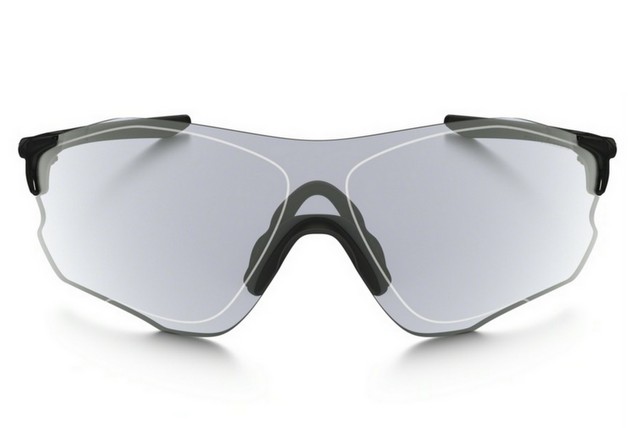
Unsurprisingly, photochromic lenses are generally more expensive than regular fixed lenses, but their versatility could make them worth it, especially for winter riding.
Lens technologies
Most manufacturers have their proprietary lens technology. Oakly’s Prizm lens tech, for example, claims to enhance colour and contrast so you can see in more detail. 100%’s HiPER also claims “selective filtering of light rays to increase contrast and definition”.
Polarisation is another feature of higher-quality lenses, cutting down glare and reflection for clearer vision.
Hydrophobic and oleophobic treatments keep resist water and oil, offering extra protection for mirror lenses and making it easier to see in rainy, filthy weather – perfect for winter.
Finally, lenses should meet or exceed impact standards. Rudy Project’s ImpactX lenses are guaranteed unbreakable for life.
>>> The 25 most stylist cyclists of all time
Frame
As anyone who wears prescription glasses will tell you, the frame is the expensive bit, even though its job seems much more straightforward than the lenses it encloses. However, with cycling sunglasses the frame is arguably more crucial to overall performance: it has to keep the lenses securely in front of your eyes, remain comfortable and fit a variety of head shapes.
Rudy Project uses Grilamid, a lightweight thermoplastic that is stable, flexible and durable. Oakley’s O Matter is a lightweight nylon that’s flexible and also heat and cold resistant ensuring that it won’t go brittle in winter.
Frames need to be safe in crashes, too: many modern frames, such as the Rudy Project Defender, are surrounded by softer elastomers to prevent injuries.
Best cycling sunglasses
Here's our pick of cycling sunglasses that work just as well in winter as they do in summer – mostly with photochromic lenses but we've also included non-photochromic glasses that we've found work well in changeable light conditions.
With each product is a ‘Buy Now’ or ‘Best Deal’ link. If you click on this then we may receive a small amount of money from the retailer when you purchase the item. This doesn’t affect the amount you pay.
Rudy Project Defender sunglasses
Review score: 10/10
Price: £96.21-£209.99/$174-224
The Project Defender is available with a range of different lenses. The ImpactX2 red photochromic lenses we tested offer excellent clarity and are guaranteed unbreakable.
Photochromic lenses are ideal for typical UK conditions and Rudy Project's impressed us. They adapted to changing light conditions quickly, keeping good definition and the ability to see road obstacles. The lenses lighten to almost transparent, while the red tint helps with definition and visual acuity.
Buy now in the UK: Rudy Project Defender sunglasses from Amazon for £96.21-£228.99
Buy now in the US: Rudy Project Defender Sunglasses from Amazon for $174-$224
Oakley Radar EV Advancer sunglasses
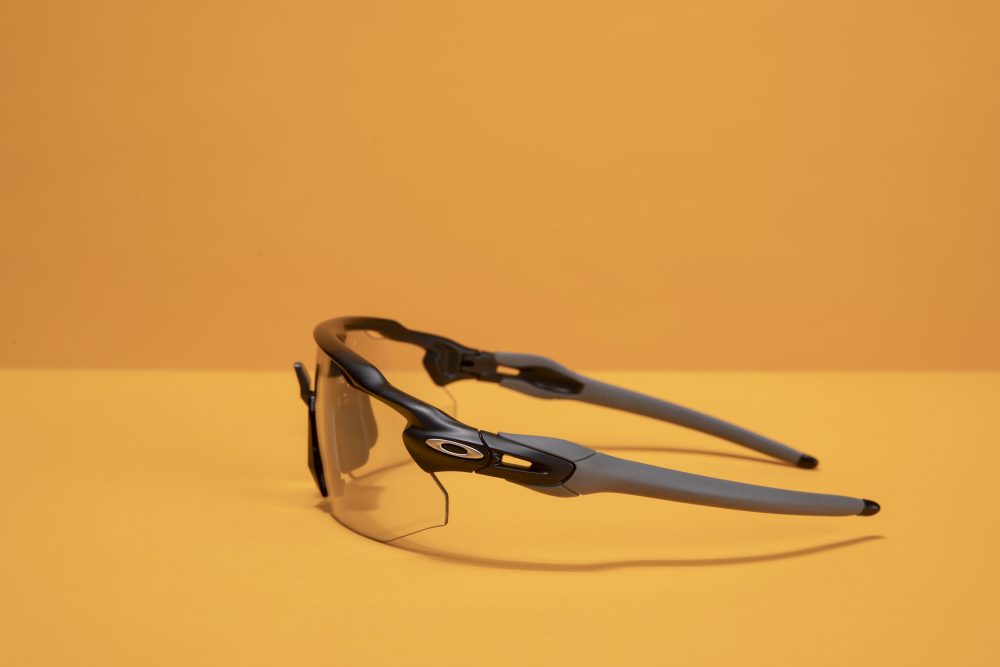
Review score: 10/10
Price: £170/$206
The Oakley Radar EVs with their very good adaptive photochromic lenses are great for the winter months. They are lightweight, comfortable and look great and that's why they regularly figure in our Editor’s Choice.
The Radar EV range is arguably the pinnacle of what the eyewear giant produces. Its design, lens technology and style make them one of the most desirable offerings in our view and it is certainly hard to argue against the masses of cyclists, pro or amateur alike, who wear them daily.
Buy Now in the UK: Oakley Rader EV Advancer sunglasses from Wiggle for £127.99
Buy Now in the US: Oakley Rader EV Advancer sunglasses from Amazon for $226.00
Tifosi Crit cycling sunglasses
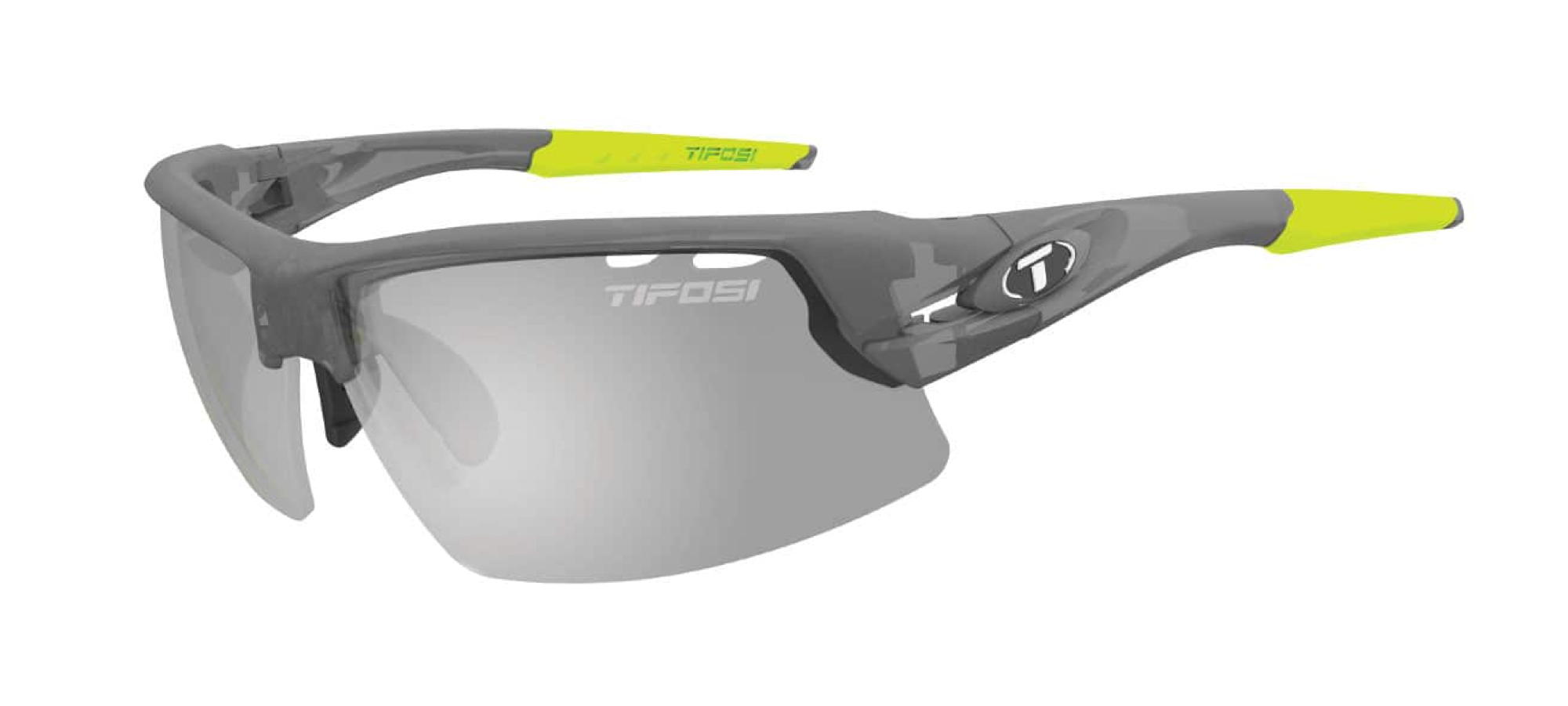
Review score:10/10
Price: Price: £48.99/$59.93-$99.95
As the name 'Crit' suggests, the Tifosis are fast. They swapped from light to dark and back again so swiftly that when we reviewed them we didn't even notice. Even at the entrance to a long mountain tunnel they did their thing so rapidly that there wasn't that usual few seconds of blackout.
In winter light we found the Tifosi Crits exceptional: in the constant strobe-like effect of the sun popping out and back in again, or even just riding in the hills where it's hidden, only to crest or descend the other side and find yourself staring the sun full in the face.These glasses really are remarkable and have totally raised the bar in the photochromic world for their very competitive price.
Buy now in the UK: Tifosi Crit sunglasses from RX Sport for £79.99
Buy now in the US: Tifosi Crit sunglasses from Tifosi Optics for $79.99
SunGod Vulcans TF cycling sunglasses
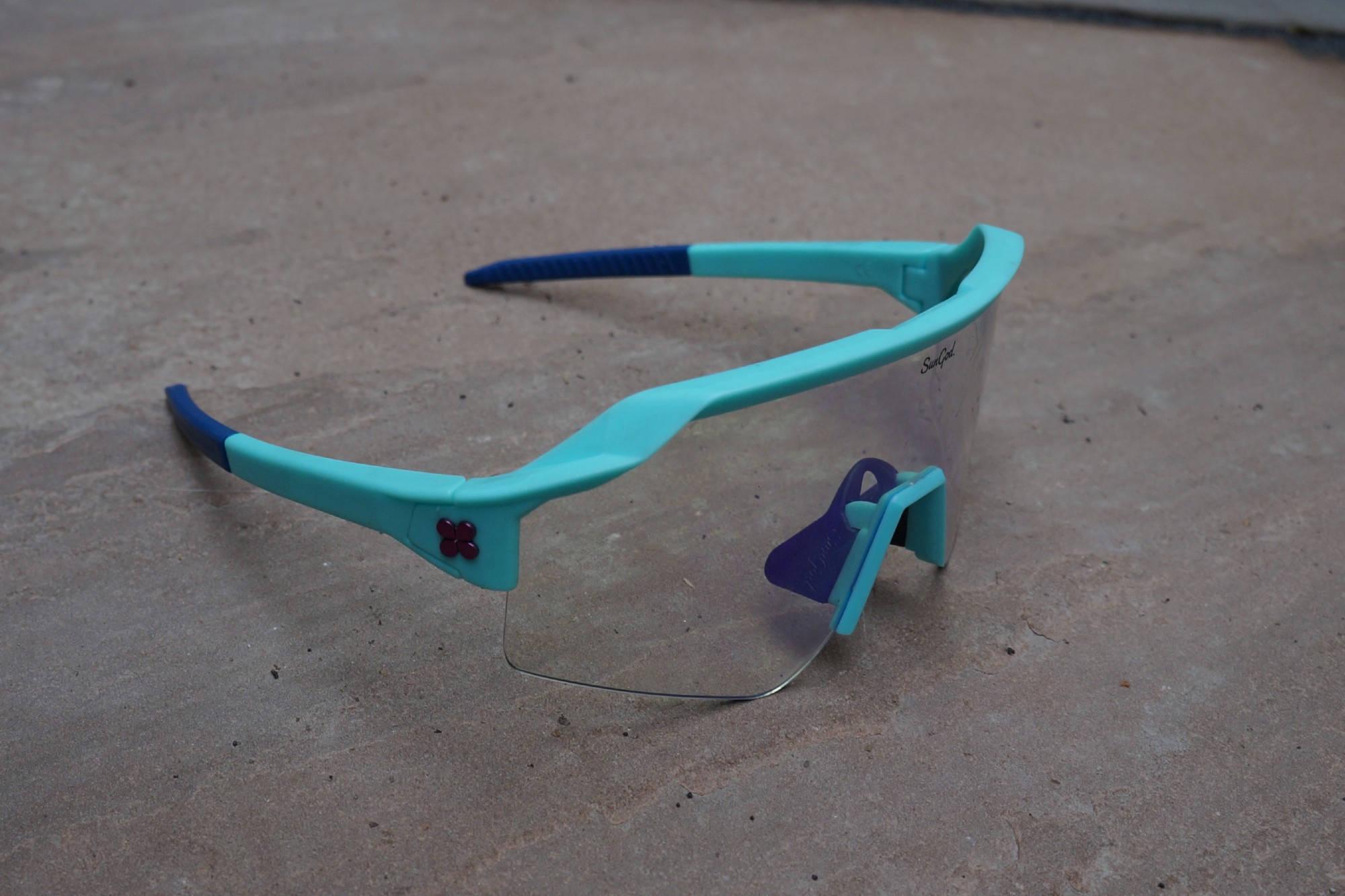
Review score: 8/10
Price: £165/$220
Every SunGod purchase is made following a design process, where you the customer can choose the colour of the frame, lens style and even the arms and 'SunGod' decal logos. We chose the 8KO Iris HV blue, a photochromic lens designed for low light conditions (with a Visible Light Transmission – VLT - of 34-79%).
SunGod says the 8KO lenses are "optically superior" to others on the market. They also come with a triple-layer scratch-resistant finish, and hydrophobic and oleophobic treatments to repel moisture, fingerprints and sweat.
In low light conditions, we found vision was good, we were able pick out debris on the road and weren't overly aware of the frame whilst riding.
Buy now in the UK: SunGod Vulcans from SunGod for £165
Buy now in the US: SunGod Vulcans from SunGod for $220
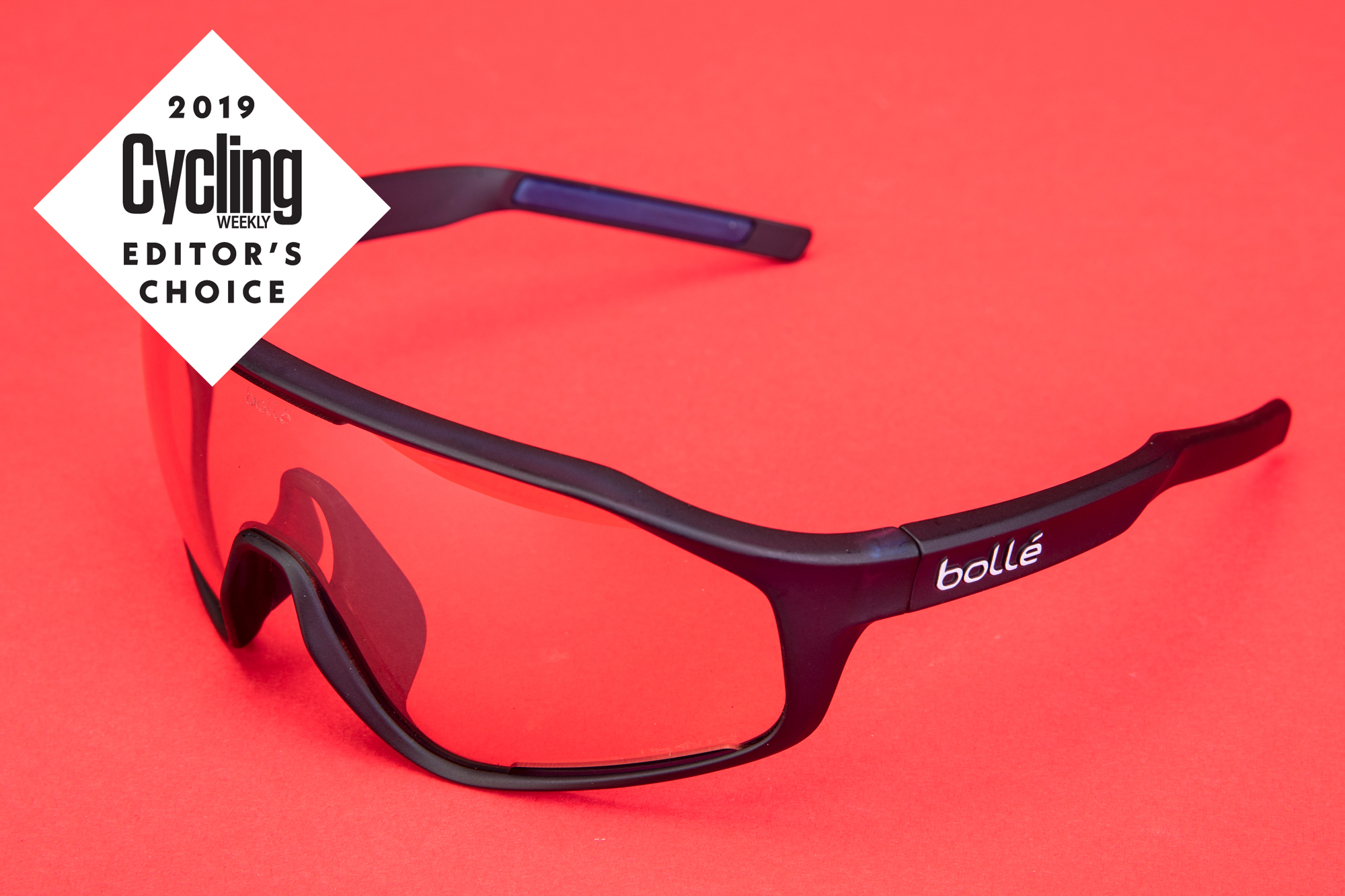
Bollé Shifter Phantom sunglasses
Review score: 10/10
Price: £149/$112
The lens in the Bollé Shifter Phantom glasses is photochromic and is ideal for UK conditions all year round. The Phantom lens shields well from bright light and stops you being dazzled even when the sun is low. But get under deep tree cover or glowering clouds and it lightens up, so that you’re not left riding in gloom.
Optical clarity is great too, and the reddish vermillion base tint helps develop contrast so it’s that much easier to see obstacles ahead.
Buy now in the UK: Bollé Shifter Phantom sunglasses from Chain Reaction Cycles for £135.99
Buy now in the US: Bollé Shifter Phantom sunglasses from Amazon for $111.19
Scicon Aerotech Photochromic SCN-XT Cycling Glasses
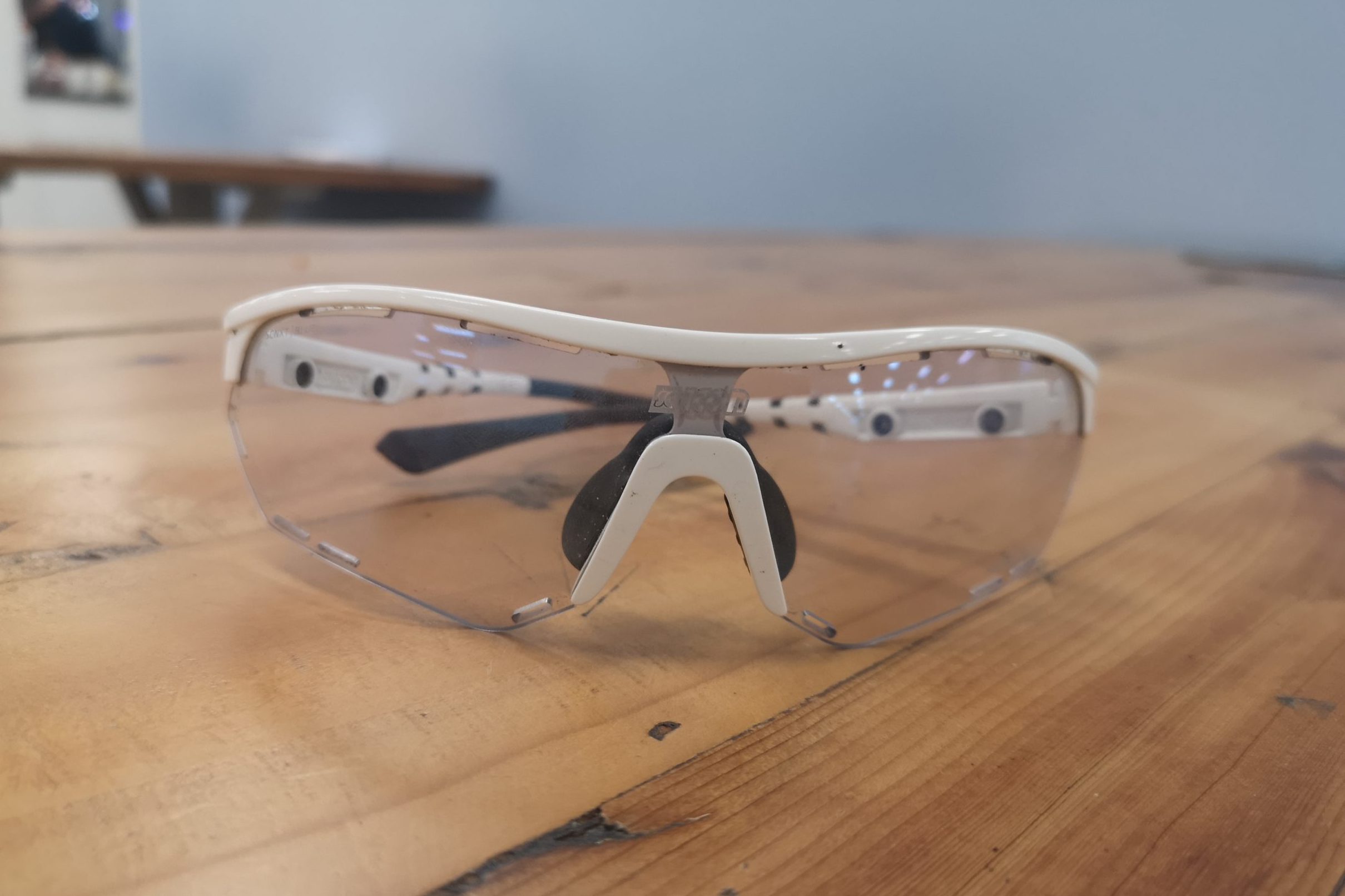
Review score: 7/10
Price: £225/$285
Scicon's fast-acting photochromic lens also offers high impact resistance as well as UV 400 protection, blocking out 100 per cent of harmful rays.
The lenses are clear when out of the sunlight, becoming darker under the rays. The pair we tested darkens to blue, but there are also red, silver and bronze options available to suit differing conditions, and all lenses are interchangeable.
Riding on one of those rare sunny winter days, the lenses became tinted quickly, and we didn't note any issues with slow changes when moving from bright lit areas to tree covered canopy roads.
Buy now in the UK: Scicon Aerotech Photochromic SCN-XT from Scicon for £225
Buy now in the US: Scicon Aerotech Photochromic SCN-XT from Scicon for $285
Rapha Pro Team Full Frame sunglasses
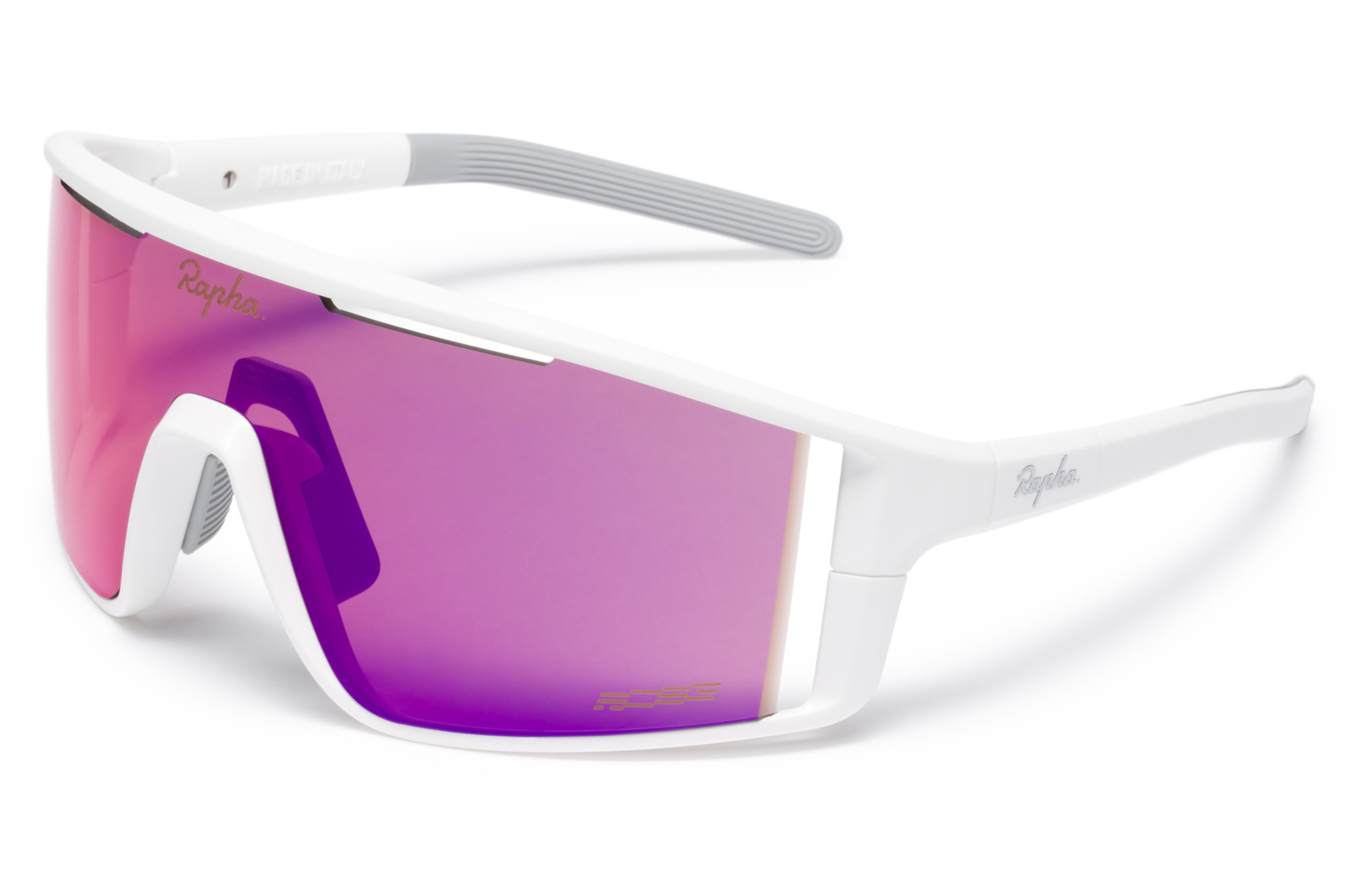
Review score: 9/10
Price: £120/$165
Although they're not photochromic and therefore not strictly winter cycling sunglasses, Rapha's lenses feature Rider Optimised Surface Enhancement lens technology. Abbreviated to ROSE and Rapha’s equivalent of 100%’s HiPER lens or Oakley’s Prizm, they offer enhanced contrast between light and dark so you can see the road more clearly in those wooded areas or areas with dappled light.
The lens is a high performer when riding in such conditions or changing light, so these would make great winter cycling sunglasses, and the fit is snug and secure. At £120 they are cheaper than a lot of other high-end offerings on the market and come in three styles.
Buy now in the UK: Rapha Pro Team Full Frame form Rapha for £120
Buy now in the US: Rapha Pro Team Full Frame form Rapha for $165
Smith Attack Max sunglasses
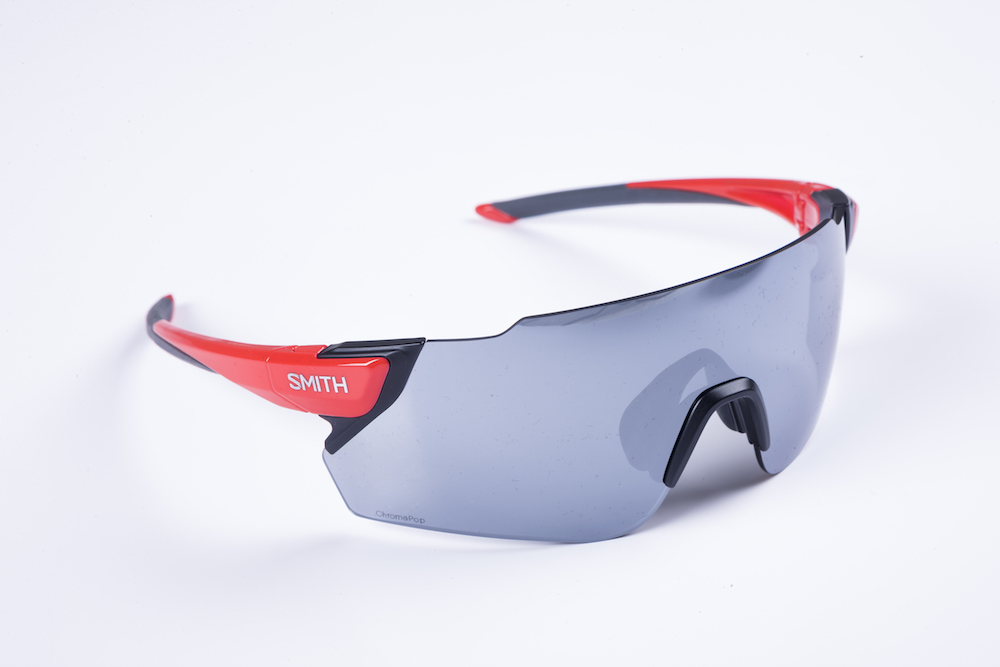
Review score: 9/10
Price: £195/$149.40-$259.00
Like the Rapha Pro Teams, these are not photochromatic glasses, but we found the pink low-light lens (they come with two lenses) supplies good clarity and definition at lower light levels – it’s the sort of lens which you take off after an evening ride to discover that it’s actually quite dark out, but you hadn’t realised it.
Smith's ChromaPop lenses are designed to filter out two specific wavelengths of light. So whereas sunlight has a continuous colour spectrum, ChromaPop lensesseparate this into three distinct ranges of colour. Smith says that this helps improve visual acuity, so that you can see detail more accurately.The lenses are easy to swap, with Smith’s magnetic attachment system.
Buy now in the UK: Smith Attack Max sunglasses from Wiggle for £114.10-£199.99
Buy now in the US: Smith Attack Max sunglasses from Competitive Cyclist for $149.40-$259.00

Thank you for reading 20 articles this month* Join now for unlimited access
Enjoy your first month for just £1 / $1 / €1
*Read 5 free articles per month without a subscription

Join now for unlimited access
Try first month for just £1 / $1 / €1
Get The Leadout Newsletter
The latest race content, interviews, features, reviews and expert buying guides, direct to your inbox!
Simon Smythe is a hugely experienced cycling tech writer, who has been writing for Cycling Weekly since 2003. Until recently he was our senior tech writer. In his cycling career Simon has mostly focused on time trialling with a national medal, a few open wins and his club's 30-mile record in his palmares. These days he spends most of his time testing road bikes, or on a tandem doing the school run with his younger son.
-
 Aero bikes with gravel wheels?: Six tech insights from Paris-Roubaix Femmes
Aero bikes with gravel wheels?: Six tech insights from Paris-Roubaix FemmesEverything we found out about tyre widths, self-inflating systems, and wheel choices from the cobbled Monument
By Tom Davidson Published
-
 'This race is absolutely disgusting': Peloton reacts to another brutal Paris-Roubaix Femmes
'This race is absolutely disgusting': Peloton reacts to another brutal Paris-Roubaix FemmesNow in its fifth edition, Paris-Roubaix Femmes is still a tough race, even for the best bike riders in the world
By Adam Becket Published